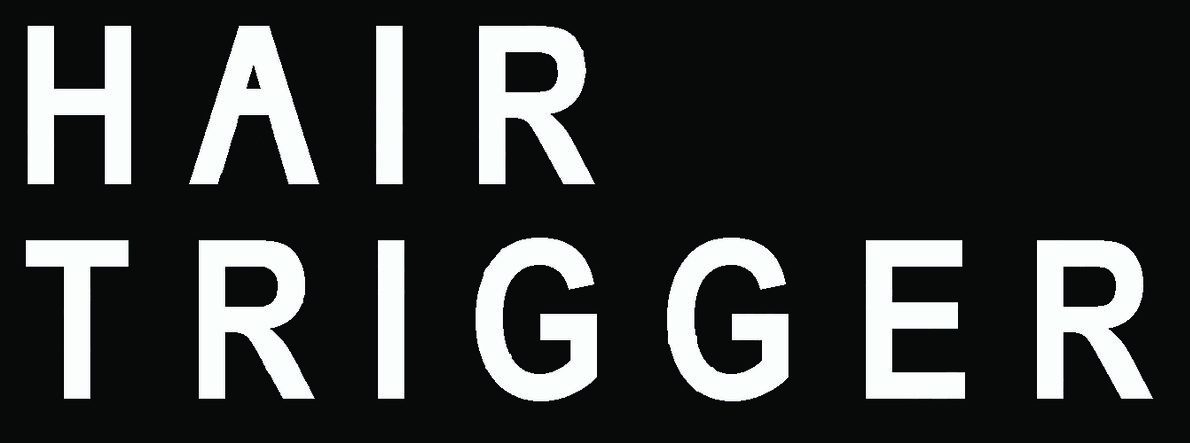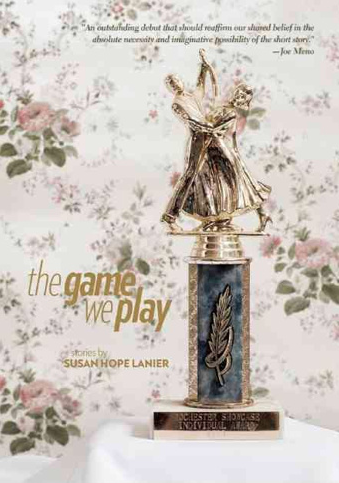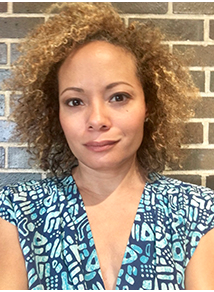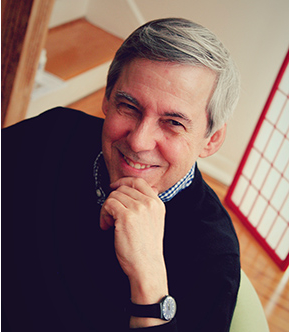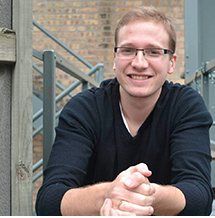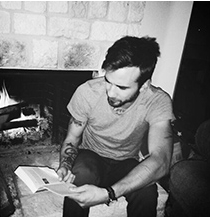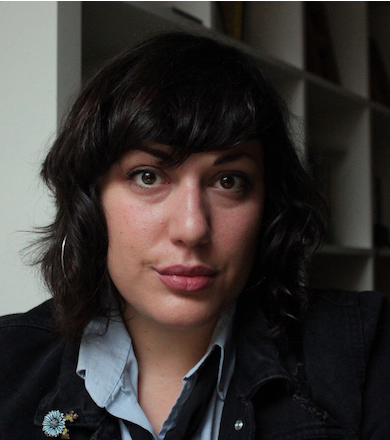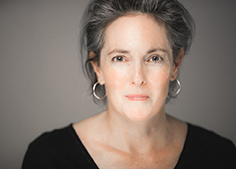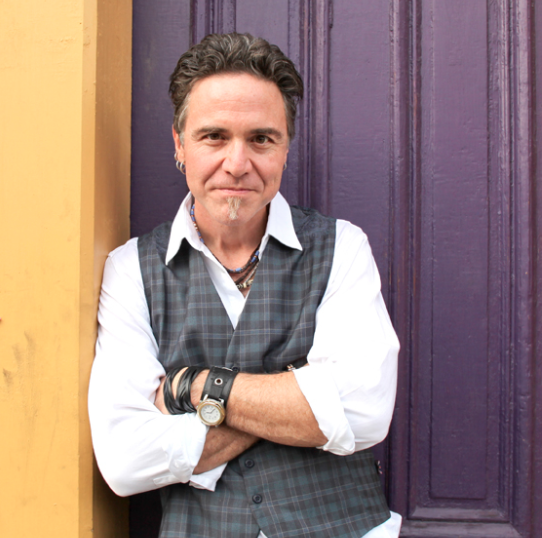On her book, Swarm Theory
I first discovered Christine Rice last year in my novel in stories class here at Columbia College Chicago. We were assigned to read her novel, Swarm Theory, and I was hooked by the first page. I remember reading past what we were assigned to read each week because it was so hard to put the book down!
The characters that Christine writes about are so genuine and real. I found myself having empathy for each and every one of them, even the ones I didn’t particularly like. The way she switches between character’s view points with each of the short stories that make up this novel is so effective and really brought every single character to life. I was so glad to get to interview her and wrack her brain a little bit.
I’d like to begin this interview by talking about your writing process. Do you have a specific ritual when you sit down to write? Is there a certain place or time of day in which you tend to do all of your writing?
I approach my writing as a job that just so happens to be creative. Writing forces me to conjure worlds and situations and characters—it’s hard mental work. But I grew up working as a cashier in my uncle’s grocery store (from the time I was sixteen until I graduated from college), and I remind myself that there are physically demanding jobs and then there are mentally-demanding jobs. I used to come home from eight hours of cashiering feeling exhausted and beat down. Eight hours of writing is also exhausting, but it’s also exhilarating and challenging and I realize how privileged I am to even be able to write.
As far as digging into my mental process, sometimes I know the situation and character well (when it is loosely based on my own experience as most of my fiction is). Sometimes I’m developing everything as I write (and I have to put in a lot of research). When I write a chapter or short story, I don’t use an outline. I prefer to let the events unfold organically on the page. I often feel like a chapter or short story won’t reveal itself fully until I think about it or approach it in a different way (revise, revise, revise). For my novels, I have a general idea of what I need to accomplish in each chapter. In other words, in this chapter, I need to establish A, B, and C. Does that make sense?
Since I wear a lot of hats—writer, editor, teacher, nonprofit & magazine founder—I approach writing in the same way I approach my other roles: I need to focus fully and completely. I can’t listen to music. I have to put my VIEW mode on FULL SCREEN. I usually get our youngest daughter off to school and then I make a cup of tea and get to work. I try my damndest to write in the mornings, but some days it doesn’t work out because there are other pressing matters to attend to or I’m teaching. If that’s the case, I try to get an hour or so of writing in in the afternoon.
I’m best and freshest in the morning. I was recently at Vermont Studio Center for a residency and I would get up at 5:30 am and write until about lunch. Six hours of generating new material is about my limit. After that, I work on editing and revising, or move on to preparing my class outlines or working on the website or literary magazine.
What do you do when you fall into a writer’s block?
Since I approach writing and editing as a job and since I was a freelance writer and worked as a corporate writer, I’ve never had the luxury of not writing. In other words, my survival depends and has always depended upon writing (or editing and teaching) in one form or another. If you have a non-writing job, you wouldn’t go in to work and say, “You know what? I’m not feeling this job today.” You’d be fired, right? So I don’t give myself that option. When I worked as a freelance writer, I couldn’t tell my editor that I would miss a deadline because I had writer’s block. When I worked in a corporate environment, I couldn’t tell my boss that the copy due to our client wasn’t finished because I had writer’s block.
I constantly remind myself how privileged I am to be able to read and write and edit and make books and teach for a living. That’s not to say that I don’t have long stretches when I’m not able to write (because of other pressing work). In other words, I do not have a life that allows me to work on my fiction every single day, all day. I have a family. My ninety-six-year-old mother lives with us. I have a dog that needs to be walked. I copyedit and offer writing coaching services. I run a nonprofit and teach and have to fundraise to keep that nonprofit running. As hard as I try to write every morning, it just doesn’t always work out. I might have to write a grant for the nonprofit. Or teach. Or respond to my writing coaching clients. Not writing is incredibly frustrating to me but it’s part of the deal. Also, when I’m emotionally beat down, I don’t have the concentration or energy to write. So I guess I’m saying that my goal is to write every day but I have accepted that I will not be able to write what I want to write every day. I might have to write a grant or write a report. In the end, though, I’m still writing.
I’m happiest when I have a full morning ahead of me to write. On those days, when the words aren’t flowing, however, I write through it. I write a scene or a part of a scene, no matter how crummy I think it is, and then I go back at it the next day or the following week or in a month to revise and finish it.
Who are some of your favorite writers? Which writers have been an inspiration to you and your writing?
Oh, wow. So many writers! It seems like an unfair question but I’ll start with Flannery O’Connor, Robert Penn Warren, Gabriel Garcia Marquez, Tennessee Williams, Zora Neale Hurston, James Baldwin, Maya Angelou, Virginia Woolf, Edith Wharton, Gogol, Dostoevsky, Babel, Katherine Ann Porter, and Katherine Mansfield. There are so many contemporary writers I admire including Jesmyn Ward, Patricia Ann McNair, Christine Sneed, Paulette Livers, Desiree Cooper, Toni Morrison, Lorrie Moore, Louise Erdrich, Lynne Sloan, Barrie Jean Borich, Claire Vaye Watkins, Tara Betts, Shawn Shiflett, Bonnie Jo Campbell, Eric May, René Steinke, Chaya Bhuvaneswar, Karen Halvorsen Schreck, Cyn Vargas, Megan Stielstra, Zoe Zolbrod, Gina Frangello, Rebecca Makkai, Eileen Pollack, Tim O’Brien, Toni Nealie, John McNally, Peter Ferry, and Eugene Cross. My full list would probably take up an entire journal!
I know that you are the editor for the literary magazine, Hypertext. Do you feel like working as an editor and reading submissions that come in from all types of people all around the world has helped you grow as a writer?
Absolutely. Actually, I taught at Columbia College Chicago for over twenty years and served as the Hair Triggerfaculty editor for twelve years. That’s when I really honed my writing and editing skills (and, of course, I continue to hone those skills). I love being able to look at a story and identify what’s working—or point out where it might be going off the rails. The act of reading is the way I grow as a writer. I think to myself, “I really like what XYZ writer did with [voice, tone, movement, structure, etc]. I might try that.” Or after I read something, I might look at the structure of that book or chapter or short story more carefully and try parodying that movement.
What tips do you have for writers who are trying to get their work published?
First off, read the publication to which you submit and be familiar with that magazine’s aesthetic. And please, please, please read the submission guidelines. You would be surprised how many people have no idea of what we publish. Or how many people contact me to ask how to submit. Or wholly disregard our submission guidelines. Of course, like most journals, our submission guidelines can easily be found under the SUBMIT tab (haha). I get so many Facebook messenger requests about submitting that I finally stopped answering them. It just seems so lazy to me that someone wouldn’t put the time in to look at our magazine before submitting.
Also, proofread your work. Read it out loud. Figure out where it is dragging or where there is unnecessary information. Approach it professionally. Be honest about your bio. If it will be your first publication, say so. Most editors don’t read the bios first. They read the story first and then, if they like the work, they’ll look at the bio.
Shake off rejection. It’s part of being in the creative field. I wish someone had told me this when I was in high school! Failure is part of the process. Do not get mad at the editor. Do not tweet about the publication. Just move on. Take a look at this interview with writer John McNallyand read his book, The Promise of Failure. In it, he talks about the importance of failure, how to embrace failure, how to make it work for you.
And remember that what editors accept or don’t accept is so subjective. Some journals have slush pile readers who are still in college. Some have older readers. Different writing appeals to different people. It’s just so subjective. And confusing. But being a writer requires a certain amount of desire and devotion and stick-to-it-ness. Know that if you submit something to one journal and it’s rejected, try another journal. You might get a more sympathetic read.
I’d like to bring up your novel, Swarm Theory, next. This novel is written in the novel-in-stories format. What made you decide to write this novel in this format rather than the traditional novel format?
I didn’t know that Swarm Theory was going to be a novel-in-stories until I got about halfway into the writing. I simply couldn’t get away from the characters! They kept popping up in new situations and informing new material. Finally, I realized that all of the characters were linked but, as you know from reading it, I didn’t write Swarm Theory in chronological order. It’s not structured as a traditional novel and it wasn’t written as a traditional novel. When I realized that it was shaping into a novel-in-stories, things started to take shape with the overall narrative. I’ve found that, even with a traditional novel structure, I don’t really know what the overall narrative arc will look like until I’m about one hundred to one hundred and fifty pages into it.
Swarm Theoryproved to be like putting a puzzle together. I knew that this and this and this probably happened to Character A to make her act the way she did, but I wanted to listen to the voices of different characters telling their sides of the story. For me, as for many writers, there are so many ways to look at a situation. I wanted to get that sense of nuance on the page. When I had finished the novel, I went in and shifted a lot of the chapters around to fit in the specific sections and to firm up the overall narrative arc. I then went in and wrote scenes/chapters to fill in gaps.
The stories that make up the novel, Swarm Theory, are told from many different points of view and are not told in chronological order. What was your process for organizing and arranging these stories into the order they ultimately ended up in?
This is a story I’ve told a few times but I’ll tell it again….
When I finished Swarm Theory, I started sending it around to agents. In the meantime, I ‘accidentally’ met the founder of University of Hell Press at AWP, Washington. I was looking over the books in their booth and said, kinda to myself, “Your authors are way cooler than me.” And the person setting up the booth, who happened to be the publisher, Greg Gerding, laughed and asked me what my book was about and I told him and he told me to send it to him. I did, thinking I wouldn’t hear from him.
In the interim, an agent responded to say that she ‘loved’ the writing but didn’t feel like she could sell Swarm Theoryif it wasn’t in chronological order. So she asked me to rearrange the chapters in chronological order…which I thought was weird and counterintuitive, but I did it because she is/was a good agent and I wanted my book to be published.
After a few months, Greg contacted me to say that his editor loved my book and that they wanted to publish it. I was floored and ecstatic but when his editor asked me if I’d worked on the book in the meantime, I said, “yes” and I sent her the chronologically-ordered book. She read it and emailed: “WHAT DID YOU DO TO YOUR BOOK! MAKE IT THE WAY IT WAS!”
I, of course, had kept the original and sent it to her.
All this to say that this writing game is so subjective. What works for one reader/editor might not work for another.
I wrote all of the chapters and then set them down on the floor, from one end of our house to the other. Our house is on a city lot and our upstairs hallway extends through the entire length of the house. So I put them down and walked around, and moved the cat who seemed to love to lay on certain chapters, and kept moving things around. And then it seemed like it needed more structure. So then I started thinking about theories…and then I started thinking about the scientific method (observe, formulate, examine, result) and that spoke naturally to what was happening in the overall narrative. So I rearranged the stories to fit into those sections.
I know that you are in the process of writing a new novel. Will this also be written in the novel-in-stories format?
This new novel is a traditionally-structured novel told in a close third-person. I wrote one other novel before Swarm Theory(one that was never published) and so this is my second traditional novel.
What else can you tell readers about your upcoming novel? When can we expect it to be released?
I’m superstitious so I won’t go into details, but it is very closely based on my life. It’s a dark comedy about the breaking up of a family (and coming together again), a parent with dementia, a parent who left and came back after two decades, caring for aging parents, and the difficulty of living in the modern world. How’s that for summary?!
Thank you for your thoughtful questions and for taking an interest in my work.
Interview by Alexis Bowe
Bio: Christine Rice’s novel, Swarm Theory, was awarded the Chicago Writers Association Book of the Year Award (Honorable Mention, Traditional Fiction), an Independent Publisher Book Award or ‘IPPY’ (Silver for Best First Book), and a National Indie Excellence Award – Winner (Regional Fiction – Midwest). Swarm Theory also made PANK’s Best Books of 2016, was included in Powell’s Books Midyear Roundup, the Best Books of 2016 So Far, and was called “a gripping work of Midwest Gothic” by Michigan Public Radio’s Desiree Cooper. Most recently, Christine’s short stories have been published or are forthcoming in MAKE Literary Magazine, BELT’s Rust Belt Anthology, The Literary Review, American University of Beirut’s Rusted Radishes, F Magazine, Roanoke Review, and Bird’s Thumb, among others. Her essays, interviews, and long-form journalism have appeared in The Rumpus, McSweeney’s Internet Tendency, The Big Smoke, The Millions, the Chicago Tribune, Detroit’s Metro Times, among other publications, and her radio essays have been produced by WBEZ Chicago. Christine taught in Columbia College Chicago’s Fiction Writing Department for over 20 years, is currently the managing editor of Hypertext Magazine, and director of the social justice storytelling nonprofit organization Hypertext Magazine & Studio (HMS).
Photo by Joe Mazza/Brave Lux
